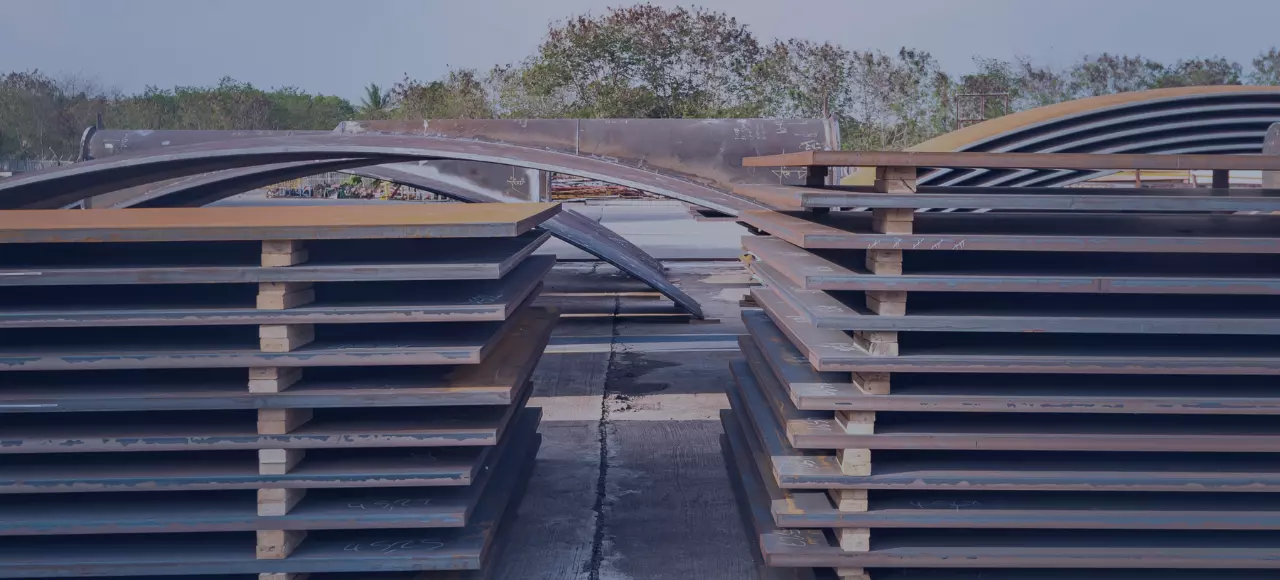In today’s rapidly expanding manufacturing industry, the need for precision-driven metal fabrication services is paramount. When discussing heavy steel plate fabrication, the foundation of many infrastructure projects, machinery components, and countless industrial applications, ensuring the utmost accuracy, efficiency, and quality is crucial. This article dives deep into the essence of metal fabrication, explicitly focusing on the intricacies of working with heavy steel plates.
Understanding Metal Fabrication
At its core, metal fabrication is the process by which metal parts are designed, cut, shaped, and assembled to produce an end product. The process becomes even more crucial in heavy steel plate fabrication, as these plates play pivotal roles in the final product’s success, ensuring strength and stability
The Evolution of Gear Manufacturing in Metal Fabrication
With the increasing demands in various industries, gears have become quintessential components. The production of gears is complex due to the precision it demands. Over the years, gear manufacturing has emerged as a separate niche within metal fabrication, relying on a blend of traditional and contemporary processes.
Traditional and Modern Gear Manufacturing Processes
Casting
Predominantly utilized to create blanks or cylinders, casting remains a popular choice for producing giant gears, especially spur gear types. Standard casting methods in gear production include shell casting, die casting, sand casting, and permanent mold casting.
Forging
Renowned for producing simple gears, forging boasts improved fatigue properties due to the inclusion of heat treatment. However, the substantial force and limitations in gear size have confined forging mainly to gears within 6 – 10 ft in diameter.
Extrusion and Cold-drawing
Extrusion, characterized by passing heated metal through a specific shape, and cold drawing, which pulls a billet without heating, offer versatile gear-forming solutions. While both have their merits, they come with their own set of challenges and benefits.
Powder Metallurgy
In recent years, powder metallurgy has grown in popularity. It involves using metal powder, forming it into a desired shape, compacting it for better mechanical properties, and then heating it. This method is beneficial for large-scale productions but has limitations in gear size and load-bearing capacity.
Blanking and Machining
While blanking works best with spur gears, using sheet metal and dies, machining is a versatile gear manufacturing method. Recent advancements in CNC machining have elevated this method’s production rates, accuracy, and efficiency, bringing to the fore techniques like hobbing, shaping, broaching, and milling.
Post-Production Essentials
Post-processing steps ensure the gears are ready for real-world applications once the gears are manufactured. Standard surface finishing processes include grinding, lapping, honing, shaving, and burnishing. These techniques ensure the gears fit their purpose and last longer, adhering to the quality standards of heavy steel plate fabrication.


Applications of Heavy Steel Plate Fabrication in Industries
Heavy steel plate fabrication is more than a meticulous process; it’s a keystone in several industry applications. Understanding its impact can shed light on the sheer significance of this fabrication method.
Construction and Infrastructure
The construction sector remains the largest consumer of steel plates. These plates are foundational for skyscrapers, bridges, tunnels, and other mammoth structures. The sheer weight and pressure these structures bear make heavy steel plate fabrication a non-negotiable aspect, ensuring durability and longevity.
Aerospace and Defense
Precision is the name of the game in the aerospace and defense sectors. Components for aircraft, defense machinery, and space exploratory vehicles often require steel plates. The extreme conditions these vehicles and machinery are exposed to necessitate the reliability and strength of heavy steel plates.
Automotive Manufacturing
Cars, trucks, and other vehicles require resilient yet lightweight components. While aluminum has gained traction, steel plates, especially those fabricated with precision, remain a staple. From chassis to protective shields, metal fabrication for automotive components remains crucial.
Energy Sector
Steel plates find myriad applications in the space of both renewable and non-renewable energy. Wind turbine towers, parts of nuclear reactors, and even components for hydroelectric dams demand the sturdiness provided by heavy steel plate fabrication.
Shipbuilding and Marine
Oceans can be harsh, and marine vessels need to be more challenging. Shipbuilding relies heavily on steel plates, given their corrosion resistance and strength. Be it cargo ships, cruise liners, or naval vessels, the fabrication of their skeletal structure leans extensively on heavy steel plates.
Having understood these applications, it’s clear that heavy steel plate fabrication holds unparalleled significance across diverse industries. It’s not just about the processes but the far-reaching impact and the foundations it lays for various sectors.
Challenges in Heavy Steel Plate Fabrication
Heavy steel plate fabrication, while foundational to many industries, presents its own set of challenges
- Material Handling: Given their size and weight, transporting and positioning heavy steel plates require specialized equipment and techniques.
- Cutting Precision: Achieving precise cuts on such thick materials demands advanced machinery and skilled operators.
- Welding Concerns: Thicker plates mean more prolonged exposure to heat, potentially affecting the metal’s properties.
- Cost Implications: High-quality steel plates have cost implications, challenging project budgeting.
The Importance of Choosing the Right Fabrication Partner
In the expansive world of metal fabrication, particularly with heavy steel plate fabrication, the quality of the end product is often a reflection of the expertise and capabilities of the fabricator. Ensuring precision, quality control, and adherence to industry standards isn’t just a necessity—it’s an art. Collaborating with a trusted partner can mean distinguishing between a project that thrives under challenging conditions and encounters frequent setbacks. From understanding unique project requirements to leveraging advanced fabrication methods, the right partner brings experience and offers innovative solutions tailored to diverse industry needs.
Heavy steel plate fabrication forms the backbone of numerous industrial applications, adding strength, durability, and precision. It is a testament to the fusion of skill, technology, and commitment to quality. With industry leaders like Zetwerk at the forefront, the domain of metal fabrication promises innovation, efficiency, and a future-ready approach for all industrial needs.




FAQs
Gear manufacturing has emerged as a separate niche within metal fabrication due to increasing industry demands. Over the years, it has combined traditional and contemporary production processes.
Traditional processes include casting and forging. Modern methods encompass extrusion, cold-drawing, powder metallurgy, blanking, and machining. Techniques such as CNC machining have further improved accuracy and efficiency.
After manufacturing, gears undergo post-processing steps like grinding, lapping, honing, shaving, and burnishing to ensure they fit their purpose and last longer.
Heavy steel plate fabrication is vital in construction and infrastructure, aerospace and defense, automotive manufacturing, the energy sector, and shipbuilding and marine.
Challenges include handling materials due to size and weight, ensuring cutting precision, addressing welding concerns, and managing cost implications.







